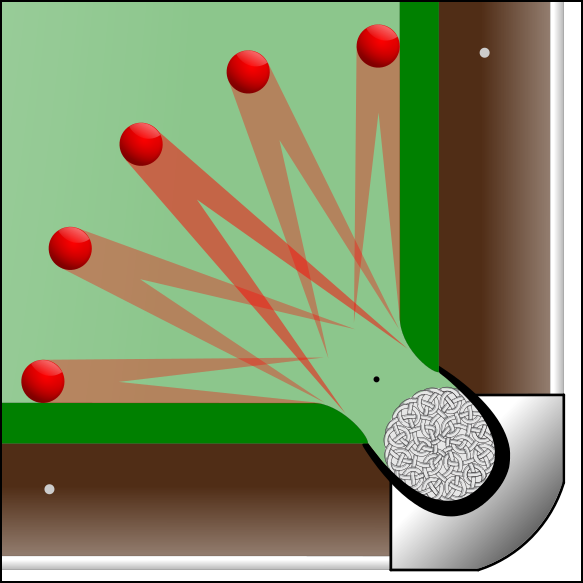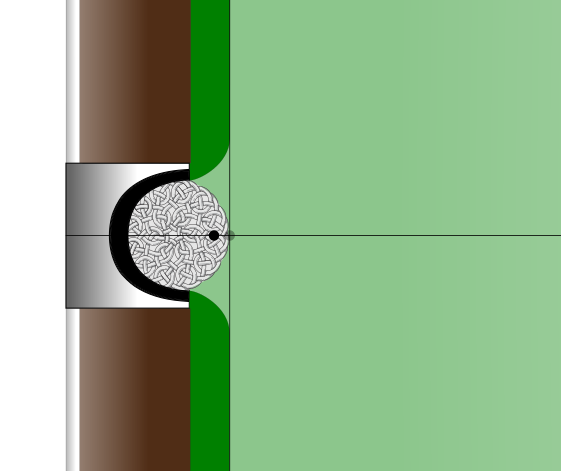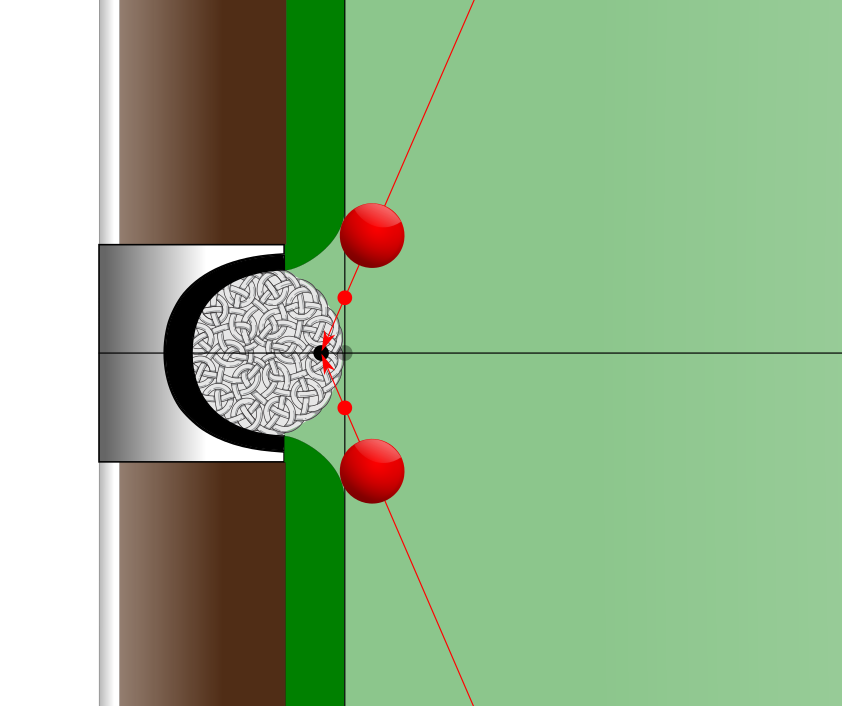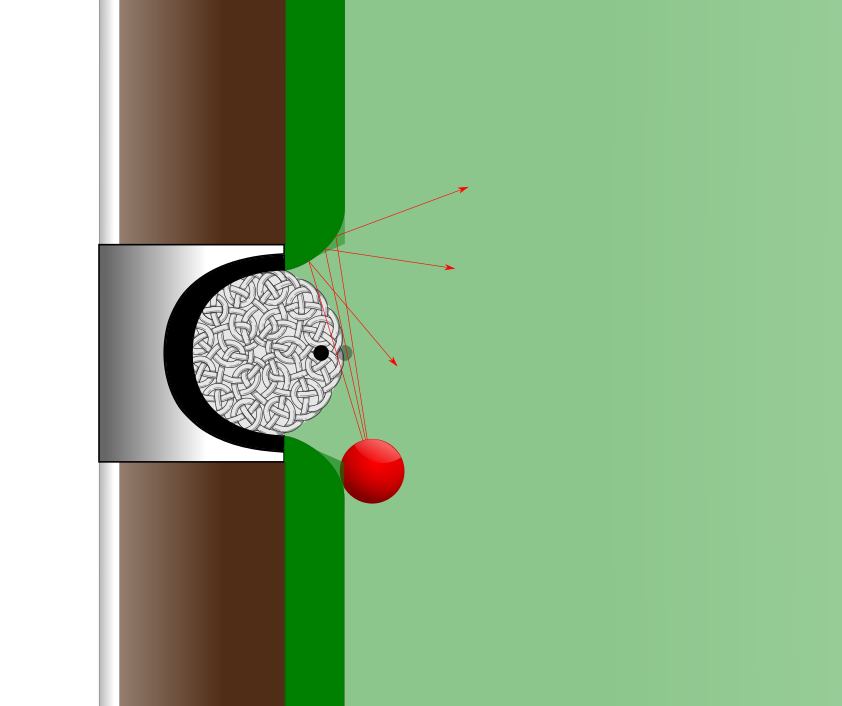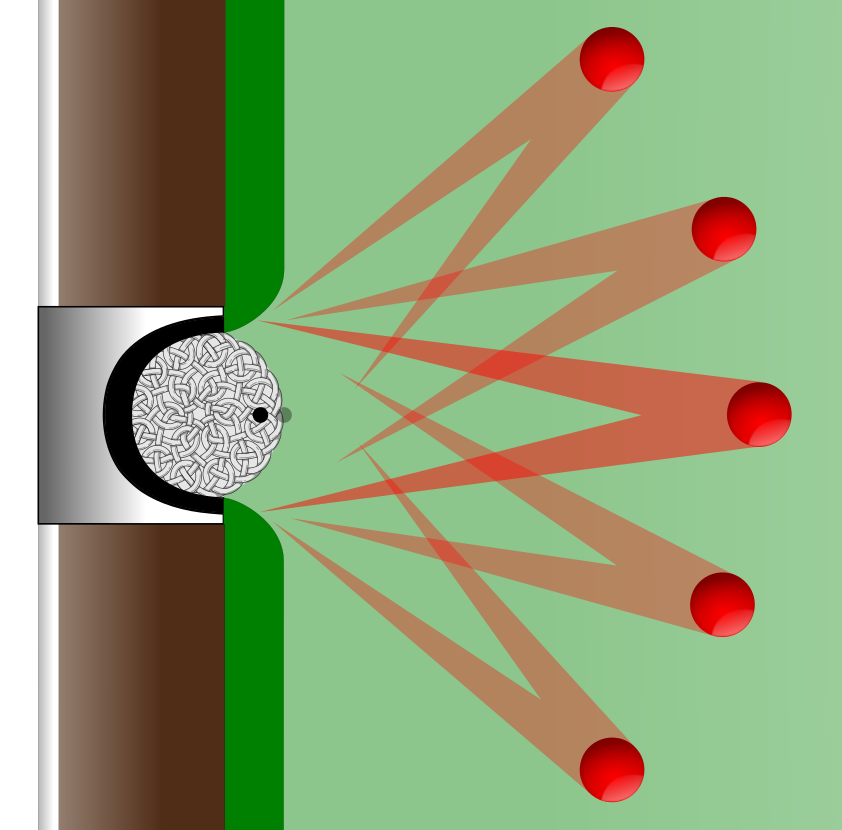APPLICATION
Now that you’ve learned the underlying concepts, geometry and labeling method of the Angle Detective system, it is time to learn the many practical ways to put it to work for you. I want to start by getting us all on the same page with respect to a basic yet important subject—the center of a pocket.
Where is the Center of the Pocket?
I played for decades before realizing that I hadn’t given any thought to the location of a pocket’s center. At best I had a fuzzy sense of where it “felt” to be. I eventually woke up to its importance and gave it the attention it deserved. Whether or not you’ve given the subject any conscious attention before, let’s give it some now. So, where exactly is the center of a pocket?
Although it may be somewhat debatable, I am going to define what I believe to be the center of a pocket. I believe that the center of a pocket is not a single location but a moving one. Its location changes depending upon several factors including table components, pocket width, pocket shelf depth, cushion arc or cut angle at pocket jaws, object ball resting position relative to pocket, and different speeds and spins.
An additional consideration is the inconsistent receptivity of pockets on different tables or even from pocket to pocket on the very same table. And then there’s the question of what intended path would give the object ball the best chance of dropping into the pocket if a player should miss to either side of that path. In other words, should we be aiming to send the object ball directly toward some visual midpoint between the cushion knuckles, or should we be favoring one of the pocket’s adjacent cushions over the other? And how would spin, speed, and other variables factor into this decision?
I believe all of these factors to be valid considerations for the top player, but I also believe that we can find fixed universal locations—one for corner pockets and another for middle pockets—that work well enough to accommodate all shots to all pockets on all tables. Marking these pocket locations on the cloth can offer very helpful visuals during practice, and by mastering them we can trust our games to fit any pocket on any standard pool or snooker table anywhere.
Corner Pockets
When shooting to corner pockets, I believe that we should slightly favor the cushion that is nearer to the object ball. This is because an object ball bouncing off of the near cushion can potentially travel toward the pocket’s other knuckle at a shallow enough angle to allow it to drop. The chances are much lower for a ball striking the farther cushion, because the rebound angle would likely be too steep.
With this in mind, we can find the universal center of a corner pocket by placing two lines of balls against the pocket’s adjacent cushions.
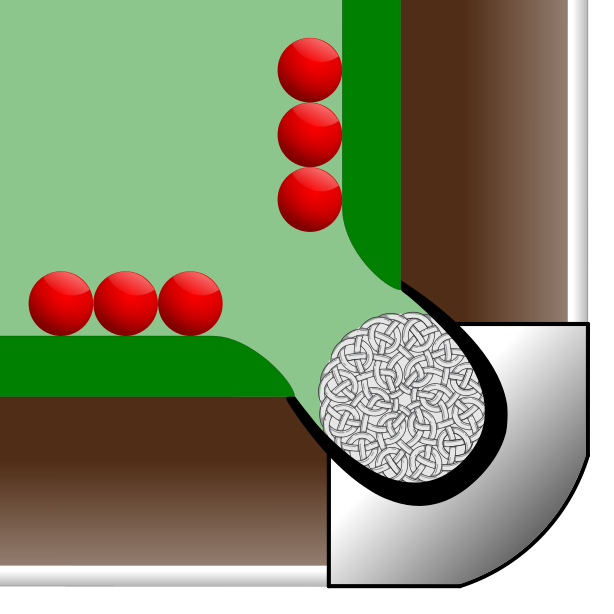 Keeping the balls against the cushions, roll the two lines toward the pocket until a single ball becomes a member of both lines at their intersection.
Keeping the balls against the cushions, roll the two lines toward the pocket until a single ball becomes a member of both lines at their intersection.
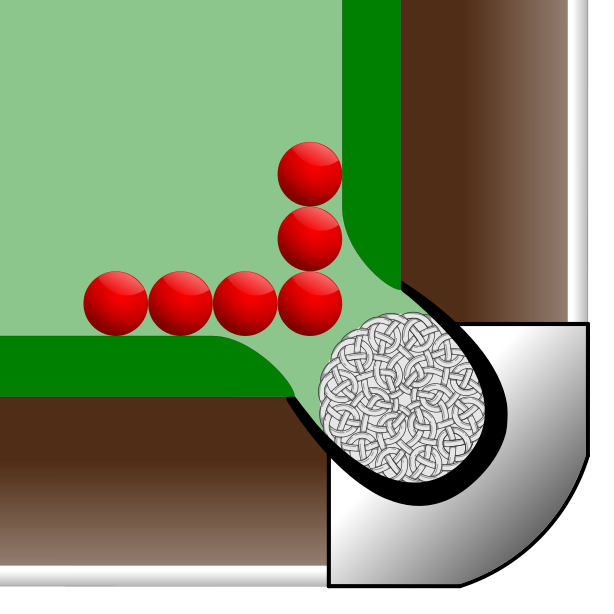 Remove all balls except for the ball at the intersection.
Remove all balls except for the ball at the intersection.
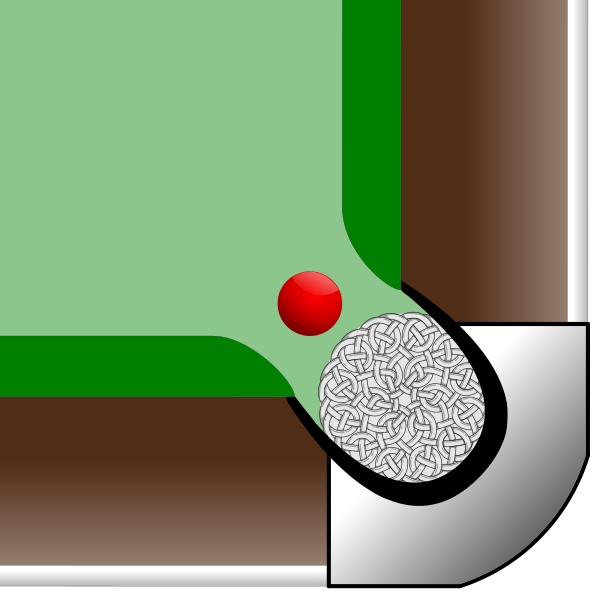 Now roll the ball about 3mm away from the pocket directly toward the opposite middle pocket.
Now roll the ball about 3mm away from the pocket directly toward the opposite middle pocket.
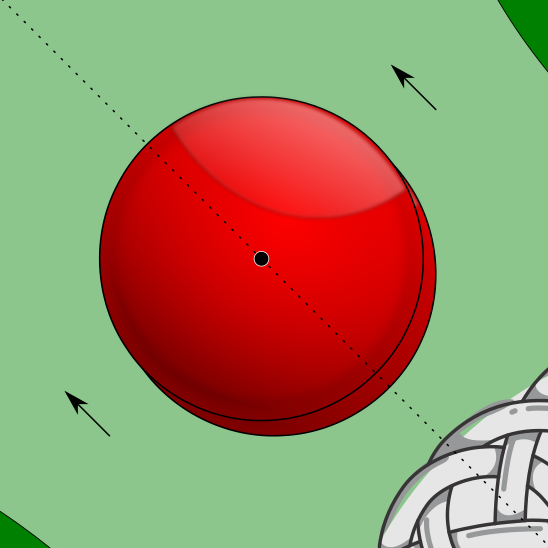
The new resting point of the ball is the universal center of a corner pocket.
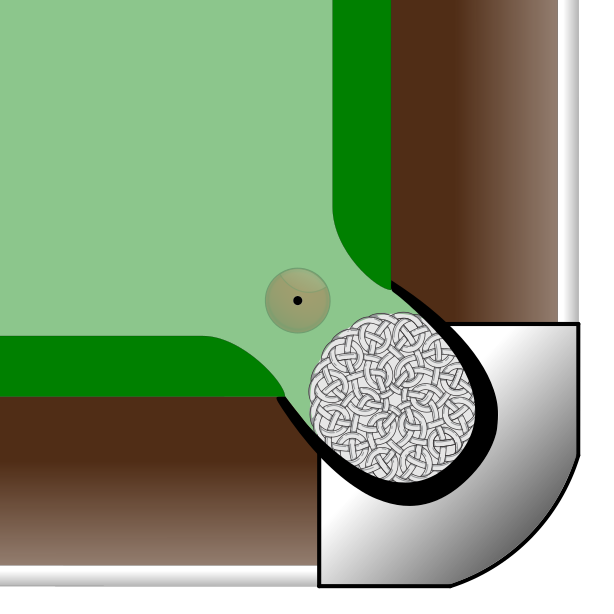 In other words, our universal corner pocket center is the intersection of lines drawn approximately one ball radius plus about 2mm away from and parallel to the tips of the corner pocket’s two cushions. For snooker tables with standard snooker balls these two intersecting lines would measure approximately 28mm away from the cushion tips. For pool tables with standard pool balls these two lines would measure approximately 31mm away from the cushion tips.
In other words, our universal corner pocket center is the intersection of lines drawn approximately one ball radius plus about 2mm away from and parallel to the tips of the corner pocket’s two cushions. For snooker tables with standard snooker balls these two intersecting lines would measure approximately 28mm away from the cushion tips. For pool tables with standard pool balls these two lines would measure approximately 31mm away from the cushion tips.
This fixed universal pocket location can be used for object balls resting anywhere on any standard pool or snooker table. To varying degrees, it automatically favors the pocket cushion that is nearer the object ball. The closer the object ball’s resting position is to the near cushion relative to the far cushion, the more the near cushion is favored. Although it favors the nearer cushion, it offers the object ball good clearance from both cushions as it passes through to the pocket.
Middle Pockets
Straight-Cut
For middle pockets, we are looking for the intersection of two lines as well. The first line is a line drawn across the middle of the table through the middle pockets. The second line is a line drawn along the tips of a middle pocket’s adjacent cushions. Where these two lines intersect is the universal center of the middle pocket for a pool table with straight-cut pockets.
This fixed universal pocket location can be used for all makeable middle-pocket object ball locations on any table, offering good and equal clearance from both cushions as the object balls pass through. This location is often at or very close to the front edge of the middle pocket’s hole drop in the slate.
Round-Cut
For snooker or other tables with rounded pockets, the middle pockets should favor the near cushion. The universal center of the middle pocket is therefore deeper into the pocket than the pool location—perhaps as much as a full 2 centimeters beyond the cushion tips.
Marking this location with a single small mark on the cloth is not possible, because it lies beyond the drop in the slate. However, you could mark the cloth at the edge of the drop where the most extremely angled incoming object balls would cross on their way to the universal center. This would give you the extreme boundaries of a moving pocket center.
The reason for the near cushion to be so heavily favored has to do with the combined effect of a helping near cushion and a hindering far cushion. The curve of the near cushion cuts away a small chunk that on a straight-cut table would have blocked incoming object balls. However, the curve of the far cushion effectively adds more angles of rejection to the far side of the pocket than a straight-cut far cushion.
This fixed universal pocket location can be used for all makeable middle-pocket object ball locations on any table, favoring the nearer cushion but offering good clearance from both cushions as the object balls pass through.
Use these recommendations as a starting point, but I encourage you to determine for yourself what universal pocket center works best for your game on your equipment.

